#baltic pagan
Explore tagged Tumblr posts
Text







#Wiccan#heathenry#pagan#theistic luciferianism#christopagan#norse paganism#celtic paganism#mesopotamian pagan#slavic pagans#germanic paganism#baltic pagan#druidry#kemetic paganism#finnish pagan#hellenic pagan#irish paganism#gaulish paganism#eclectic witch#eclectic pagan#green witch#kitchen witch#lunar witch#cosmic witch#witchcraft#dianic wiccan#wiccablr#paganblr#witchblr#paganism#wicca
5 notes
·
View notes
Text

How do people share their feelings? I poured out all my water to manifest myself beyond my shell. Wasn't that enough?
#soeren baptism#soerenbaptism#welcome to leech world#water me#water#watercore#ocean#oceancore#ocean core#water core#baltic sea#balticsea#seacore#sea core#seapunk#witchy#wiccan#wicca#bruja#hexe#hexerei#occultism#paganism#faekin#naturecore#orb core#orbcore#orbs#shell#poets on tumblr
425 notes
·
View notes
Text
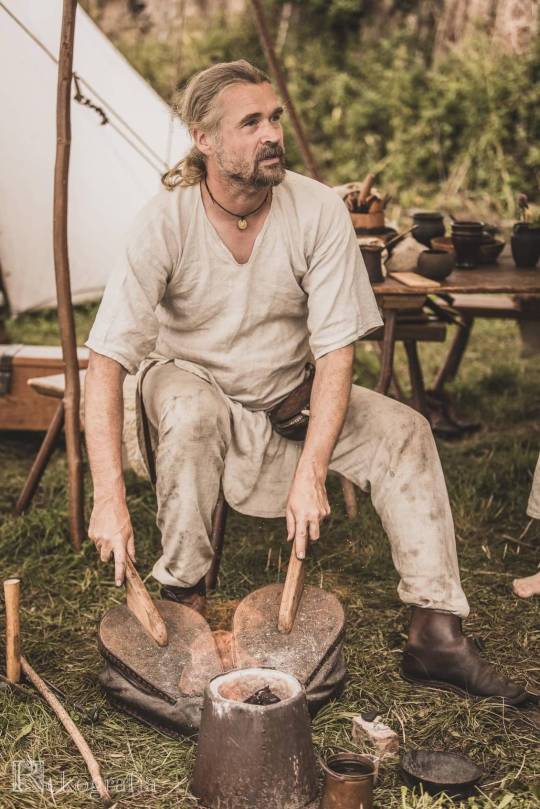
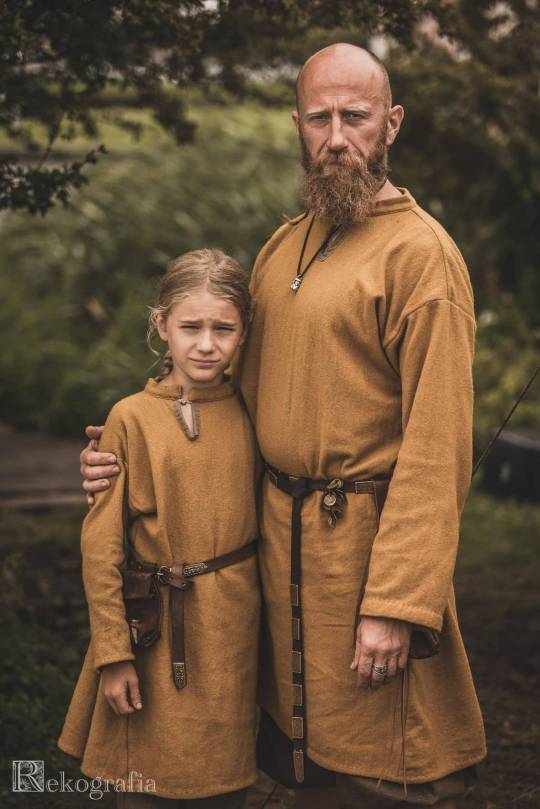
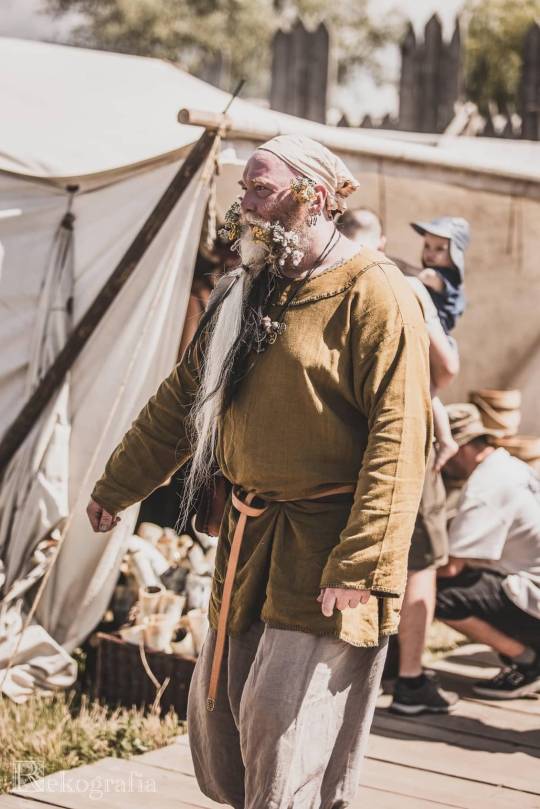

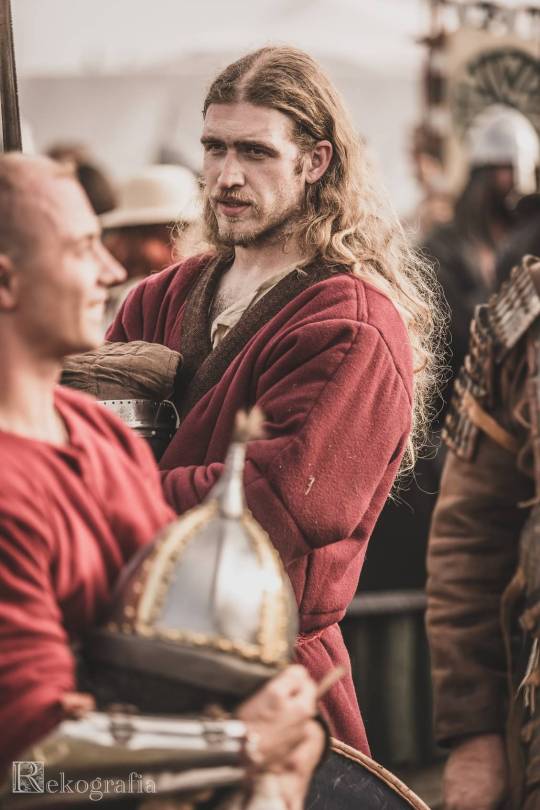
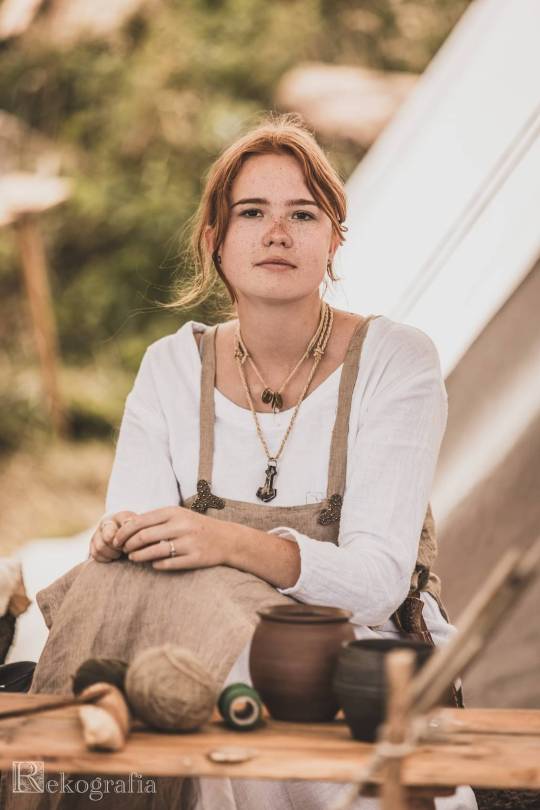
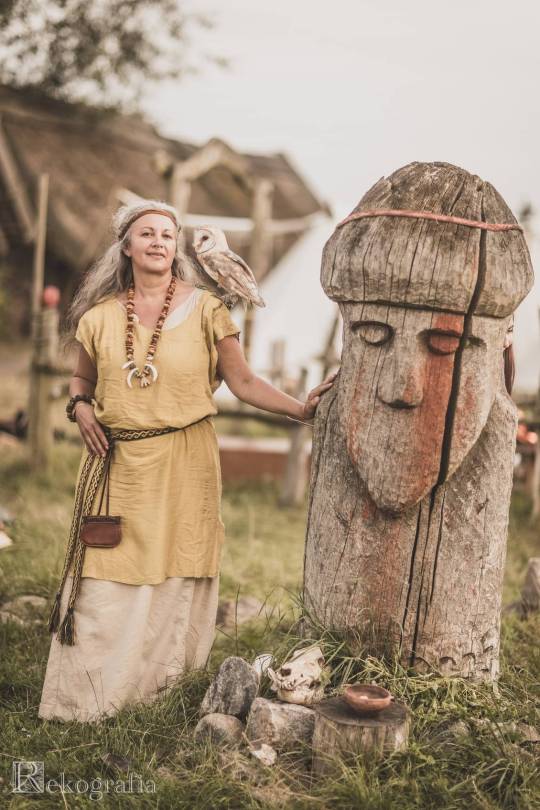

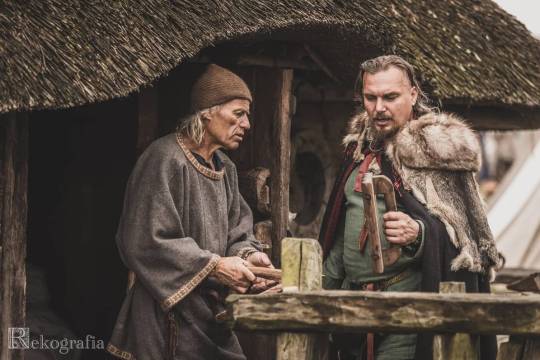
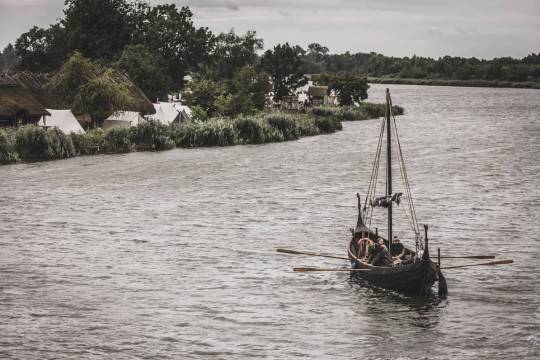
Slavs and Vikings Festival in Wolin, Poland
The Slavs and Vikings Festival is one of the largest early-medieval events in the world. There are archery and spear-throwing competitions, games and contests for kids, craft-making presentations demonstrating how jewelry, coins, horns, and amber were created, live music, readings, and much more.
Wolin is a town located on Poland’s largest island (of the same name) on the coast of the Baltic Sea. It's a City of History, whose glory days date back to 1000 years ago. In the early Middle Ages, it was one of the largest and most powerful cities in this part of Europe, and ranked among the most important ports of the Baltic Sea. Wolin is considered to have been the gateway through which Scandinavians traveled southwards from the Baltic Sea to inland Piast state.
#festiwal słowian i wikingów#slavs and vikings festival#wolin#poland#slavic#slavs#vikings#slavcore#scandinavia#piast dynasty#pagan witch#pagan#paganism#nordic#viking#european culture#middle ages#baltic sea#medieval#reenactment#*
115 notes
·
View notes
Text

Yuletide is over, which means it's the perfect time to share my Yule altar
#aka “how to make yule trve kvlt”#witch#altar#pagan#satanist#eclectic witch#baltic witch#photography#witch altar#my altar#witch aesthetic#satanic aesthetic#ancestral worship#yule#yuletide#yule altar#yule aesthetic#winter solstice#i guess there's a lot of horned creatures this time XD#because as you probably caught on by now the Lightbringer is there always and Ancestral and Personal tokens stayed too
63 notes
·
View notes
Text

The Sun rots and the Spirits open their Eyes.
Sigil for the dark and restful season.
#my art#art#dark art#occult#witch#witchy#lunaarcana#gothic#sigil#sigilism#galdr#bindrune#runes#rune magick#rune magic#witchcraft#baltic symbols#pagan#heathen#pagan art#occultism
61 notes
·
View notes
Text

Rūdolfs Priede "Senču Cīņa" ("Battle of the Ancestors") from the collection funds of the Liepāja Museum
#Latvia#Latvian art#whimsipagan#baltic#baltics#paganism#pagan#idk what leaves me speechless more: the cat hat or the metal tiddies
78 notes
·
View notes
Text
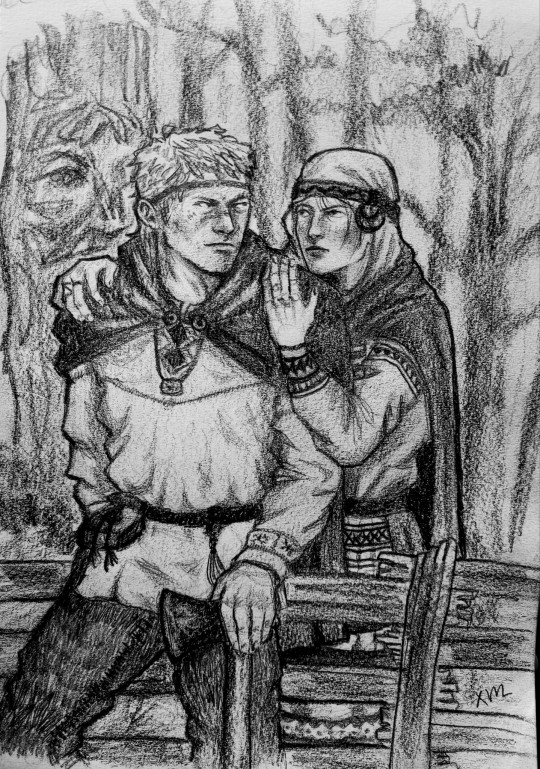
10thish century pagans, nat and gil, having a moment together while gil takes a break from chopping wood for her
#my art.#hws prussia#hws belarus#hetalia#prubela#im SO pleased with this#baltic prussia#ftw#pagan hetalia#spent so long tryijg to figure out their outfits !!!#historical hetalia
132 notes
·
View notes
Video
youtube
Linda Ansone - Šūpojiesi, tautu meita (Latvian Spring Equinox / Easter folk song)
20 notes
·
View notes
Text
Dāncau nūs angzdrīkiks, rutīka, Ausaina kranīka, rutīka, En zallai kirnīkan, rutīka. Nu tū angzdrīkike, rutīka, Pawartinais saūlin, rutīka, Be wissan gīwatan, rutīka. Patrimpe Dēiwe, rutīka, Dāis nūmans gīwatan, rutīka, Kāi stas ruggis tērplai, rutīka, Kāi kweitēi kweitīlai, rutīka, Dīgi undai teklai, rutīka.
#baltic ritualistic folklore#romuvos#pagan metal#baltic folk metal#snake dance#old prussian#music#faves#Bandcamp
12 notes
·
View notes
Text


Lielā diena, 2022. Quietly singing across the silent river, coaxing the silver sun out, greeting its longer days.
66 notes
·
View notes
Text
#Bandcamp#music#Latvian music#metal#Baltic folk#folk metal#pagan metal#viking metal#Riga#Latvia#Skyforger#Zobena dziesma#Sword Song
8 notes
·
View notes
Text






If you’re interested, come on in!
#norse paganism#celtic paganism#paganblr#hellenic pagan#paganism#baltic pagan#Suomenusko pagan#Finnish pagan#Finnish paganism#Mesopotamian pagan#slavic paganism#slavic pagans#slavic polytheism#norse polytheism#celtic polytheism#Finnish polytheism#dianic witchcraft#dianic wicca#dianic wiccan#wiccan#wicca#wiccablr#eclectic witch#eclectic pagan#eclectic wicca#hellenic witch#norse witch#celtic witch#cosmic witch#satanism
3 notes
·
View notes
Text

sunwater
#soeren baptism#soerenbaptism#naturecore#welcome to leech world#watercore#water core#water me#water#sunset#sunlight#cottagecore#sunrise#sunrizing#sun rays#sky#ocean aesthetic#ocean core#ocean view#oceancore#ocean#sea#faekin#baltic sea#balticsea#baltic states#bruja#occult#pagan#occultism#ghostcore
77 notes
·
View notes
Text
holy diver you've been down too long in the midnight sea......
#rotating thoughts abt gil's elemental associations/affinities in my head#the baptism of drowning and the abyssal sleep of death and being born by the baltic sea. the pagan tradition of drowning unwanted children.#and so on.
5 notes
·
View notes
Text
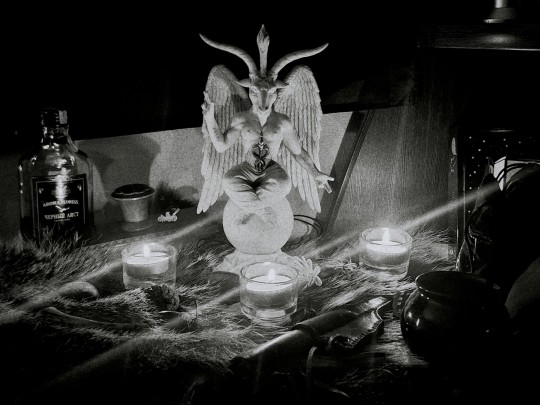
Since I'm sharing belated pictures, here's one from my Vėlinės/Samhain altar 🖤
#a lot of things going on here satan tokens from ancestors tokens from me autumn flowers divination tools crystals and so on#witch#altar#velines#samhain#pagan#satanist#eclectic witch#baltic witch#photography#witch altar#my altar#samhain altar#witch aesthetic#samhain aesthetic#satanic aesthetic#ancestral worship#it's the first time i look at my altar and admire it 🥲#i'm a polytheist in the sense i'm a pagan and a satanist and i practice ancestral worship#this holiday is mostly about ancestral worship but satan is always there#he and lilith are the deities i feel the most drawn to#i actually anointed my grimoire after taking it on the graveyard oddyssey and asking for my ancestors' blesssings#of course the offering part of the altar is alcohol 🤣#also i better not see anyone go “YoU cAnT bE bOtH” since i get that at times I am spiritually what my heart calls towards#some gods came to me with my roots some called to me#diary pages
28 notes
·
View notes
Text
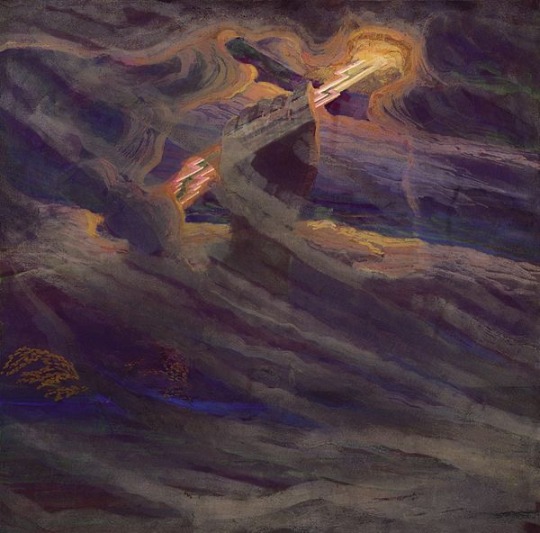
Perkūnas
The Lithuanian god of Thunder
Attributes: lighting, storms, the sky, an axe or sledgehammer
Animals: goat
Plants: oak
Colours: black, white, grey
The sky deity of the Baltic religion, Perkūnas, is regarded as a fertility god and the guardian of law and order apart from being the god of thunder and lightning. Perkūnas is the most important Lithuanian god, and is the central figure in the Pantheon. The oak, which is the tree most frequently struck by lightning, is regarded as sacred to him.
Perkunas is usually depicted as a middle-aged man riding a two-wheeled cart with goats. In some accounts, the thunder god is seen driving a flaming horse or a cart of white and red horses through the skies. He would be identified by the constellation of Ursa Major.
On his heavenly chariot, Perkunas is holding a goat with one hand while he uses an axe or horn on the other.

Mythology
Folklore usually emphasises that Perkūnas is a patron of weather, he lives between the heaven and the earth in the clouds, he commands the thunder and lightning. Thus Perkūnas occupies the centre of the structure of the universe, becomes the master of the atmosphere (Perkūnas is correspondingly associated with the heaven and the devil - Velnias with the earth, underground, water). Perkūnas possesses a two-wheeled cart harnessed by two goats or horses , and rides through the sky , the sound of the wheels often causes thunder. Perkūnas strikes and chases the devil or devils, though often it is said that this animosity is based on personal grounds because of a certain act the devil committed (theft, insult, abduction of Vaiva, as mentioned below).
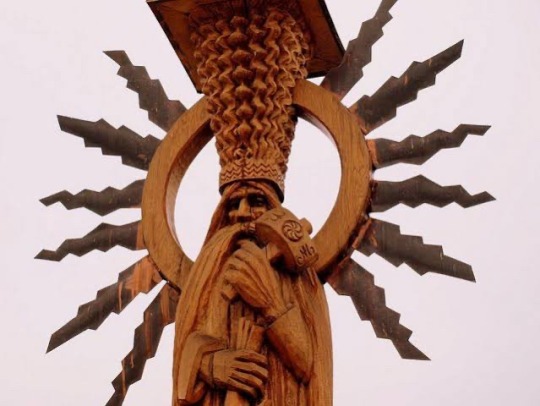
An important function of Perkūnas is to fight Velnias. He is sometimes considered the antithesis of Perkūnas and is the god of the underworld and death. Christianity considers "Velnias" akin to their "devil", though this is not in line with ancient beliefs.
Perkūnas pursues his opponent, Velnias, for picaroon or theft of fertility and cattle. Velnias hides in trees, under stones, or turns into various animals: a black cat, dog, pig, goat, lamb, pike, cow or a person to avoid Perkūnas.
Perkūnas pursues an opponent in the sky on a chariot, made from stone and fire (Lithuanian ugnies ratai). Sometimes the chariot is made from red iron.
Perkūnas possesses many weapons. They include an axe or sledgehammer, stones, a sword, lightning bolts, a bow and arrows, a club, and an iron or fiery knife. Perkūnas is the creator of the weapons (Akmeninis kalvis, "the stone smith") or he is helped by the heavenly smith Televelis (Kalvelis).
Perkūnas simultaneously is given the function of the patron of fertility, when he rolls his thunder for the first time in spring the grass starts growing, the processes of vegetation begin, Perkūnas also appears in the wedding symbolism. One other function of Perkūnas is keeping justice. He chases devils but he also punishes bad people, fights evil spirits and keeps the order of the universe.
According to ancient tradition, people who were struck by lightning were protected from devils. The objects that were struck by lightning were also used to cure various ailments, such as fever, toothache, and anxiety. Perkūnas is thus seen as a god of healing as well as destruction.
In some songs Perkūnas, on the way to the wedding of Aušrinė (dawn; the daughter of the Sun), strikes a golden oak. The oak is a tree of the thunder god in the Baltic mythology. Lithuanian Perkūno ąžuolas or Latvian Pērkona ozols ("oak of Perkūnas") is mentioned in a source dated to the first half of the 19th century.
Perkūnas is also connected to Thursday. Thursday is the day of the Thunderer in many traditions: compare Polabian Peräune-dǻn ("day of Perun"), Lithuanian Perkūno diena. Perkūnas is associated with the Roman god Jupiter in early sources. Thursday is a day of thunder-storms and rains, and also of weddings.
Family
In most myths, Perkūnas’s wife is Žemyna, the goddess of the earth. In some myths, Perkūnas would expel his wife and children and then remain in the sky by himself. The reason for this is that Perkūnas was given the responsibility of the stones in the sky whose rumbling and rubbing against each other tend to generate thunder and lightning during storms.
In songs about a "heavenly wedding" Saulė is married to Perkūnas amd cheats on Perkūnas with Mėnulis (the Moon); Perkūnas splits Mėnulis in half with a sword, which accounts for the moon phases we see today.
According to another, more popular version, Mėnulis cheats on the Sun with Aušrinė (the morning star) just after the wedding, and Perkūnas punishes him. However, he does not learn and repeats the adultery and is punished again every month. Other explanations say it is why the Sun shines during the day and the Moon at night. Though divorced, both want to see their daughter Žemyna (the Earth).
Some stories claim that Perkūnas and a woman known as Vaiva or the rainbow were supposed to get married but the bride was kidnapped by Velnias, the god of the underworld. Since then, Perkūnas has been hunting Velnias. Some stories also claim that there are four sons of Perkunas who are representative of the four seasons or the four cardinal directions. Sometimes there are seven or nine Perkūnai referred to as brothers. It is said in Lithuanian "Perkūnų yra daug" ("there are many thunders").
#Lithuanian mythology#baltic mythology#baltic paganism#perkūnas#Perkunas#thunder god#Lithuanian deities#thunder#lightning#paganism#witchblr#paganblr#mythology and folklore#mythology
40 notes
·
View notes